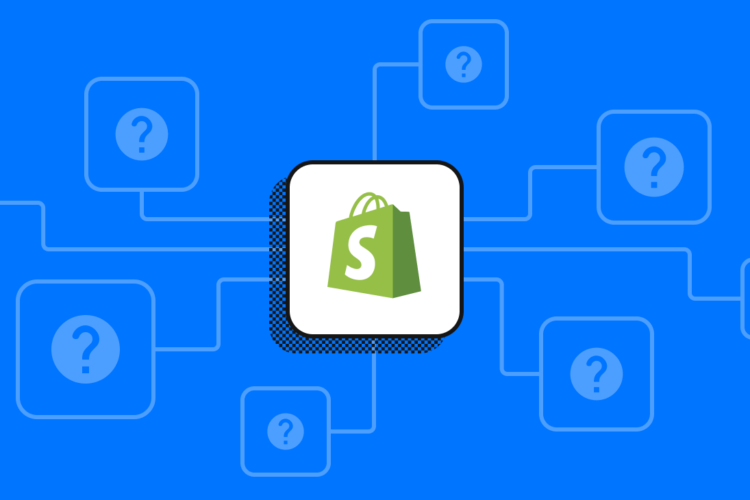
At last, you’re almost finished writing your article – everything is ready and you’ve just hit that publish button. Is that it? Can you finally relax?
Quick answer: yes, but no. I mean, you can relax a bit, but the game isn’t over yet.
And this article is all about what you need to do to stay at the top of your game after you hit that publish button.
So, your post has clear and useful information, it’s engaging and relevant to your audience. In a word, everything a good article should have. You even improved your content with an SEO tool. What’s next? Do you just wait until Google crawls your post and hope that, in the meantime, some new customers will hear about your brand?
Think about this – when Neil Patel publishes a blog post, it doesn’t rank well just because its content is high-quality and has enough relevant keywords. Don’t get me wrong, that’s important too. But Neil Patel ranks high because he’s Neil Patel. He’s one of the highest authority voices in digital marketing.
What does that mean? It means he has a wide audience that waits for his useful articles to pop up. Besides, once he publishes an article, lots of other influencers, agencies, and fans share his article on their platforms. That’s a lot of coverage!
And this is what we’re going to do as well – we have to spread the word about our article.
But how can you do that effectively without looking spammy or too salesy?
Here’s the Game Plan
First, we need to promote the article, so we’re going to talk about a few efficient techniques to make your post more visible on the Internet. For even better results, you can mix these strategies while you also improve networking in your niche.
And by promoting it, I mean getting it in front of your audience. After all, the better we promote it, the better the article will do in the long term.
An article is a great way to build trust with your clients, establish authority in your niche, and increase your brand’s popularity.
Sharing the Article with Your Audience
According to Statista, email marketing has one of the highest ROIs – around 43%. That means that for every $1 you invest in email marketing, you make $43 in return. But this is not the only benefit of staying in touch with your customers through email.
Email Blast Your Subscribers
Up to 49% of customers said that they’d like to receive promotional emails. And that includes your newest article too! So the more people you notify about your new post, the more visible your article will be.
When you’re sending your email blast, don’t forget to encourage your readers to click and read your article. And if they think it’s great – they can even share it on social media.
Share the Article on Your Social Media Profiles
Not everyone that follows you on social media signed up for your newsletter. That’s why it is important to share your posts on social platforms too.
For a better engagement, you can use relevant hashtags or catchy snippets of the article. On LinkedIn, for example, you can insert that snippet into your post to start a discussion, and you can link there to the full article. Alex Savy, Co-Founder, and Editor-in-Chief of Comfynorth says “Hosting freebies, collaborating with active bloggers in your field, and using relevant hashtags are all excellent ways to use social media for link building purposes.”
Alternatively, Pinterest can also be a great way to promote your articles. Even though Pinterest’s content is highly visual, you can reach new people. The more appealing your snippet is, the higher the chances people will pin it and visit your website.
Tag the Websites Your Mentioned in Your Posts
This is useful from 2 different perspectives.
On the one hand, you get access to a larger audience. You let other businesses know that you’ve mentioned them in your article. Maybe they’ll share your content with their audience, exposing your brand to an even wider public.
On the other hand, by tagging the websites you mentioned in your article, other people with similar interests as you will see your post. Whether we’re talking about other businesses that tagged the same websites as you did or other websites that want to be mentioned in a future post written by you – your chances to network with other brands increase exponentially.
Reduce Server Response Time:
It’s not a decision you should make quickly or on the spot. However, since your hosting server is a major factor in load time, knowing whether you have the optimum arrangement is important. Above all, make sure your servers are close to your target audience, have appropriate bandwidth, and enjoy sufficient uptime by checking with your supplier. If not, it might be time to think about utilizing a different hosting company. says Tiffany Payne, Head of Content at PharmacyOnline.co.uk
Link Building – Promoting the Article
Link building gives you credibility – not everyone will want to link shady-looking websites with poor information to their brand. There are a lot of tools like Ahrefs, Ubersuggest, Linkody, and so on that help you identify bad or unnatural links and remove them for you.
So high-quality link building is very important when it comes to promoting your articles. If done right, you lower your bounce rate, drive more sales, and create new business opportunities.
Besides, link building is one of the most important factors that improve search ranking. And it goes without saying – the higher your article will rank on Google, the more traffic it’ll attract.
So this is what we’re gonna do:
First, we’re going to talk about a few different techniques that can help you promote your article. You can choose what method seems best for your brand, or you can mix them up – everything is up to you!
No matter what you choose, the process is quite straightforward and easy to remember:
-
Find relevant websites
-
Find the right contact people
-
Find their email addresses
-
Send them a pitch to link to your content
Sure, things might seem difficult at first. Especially the part where you have to come up with a unique approach for every contact you want to pitch. But with a little bit of practice and preparation, you’ll see that promoting your article is not that hard. On the contrary, it can be quite enjoyable and you’ll learn a lot of things along the way!
Different Types of Outreach
If you think that committing to only one strategy will bring tons of potential customers and will boost your brand’s visibility – well, think again. The core of every big and small business SEO strategy is outreach and link building.
Your prospects are different and your approach should be too. Getting in touch with different businesses varies from brand to brand. Only after you try to implement every one of them, you can see what campaigns are people more likely to respond to.
It is worth noticing that while you can do outreach manually and personalize everything, your success rate with this approach will be very low. If you are serious about these strategies, consider using a cold email software tool to create big lead lists and outreach to them.
Otherwise, these strategies might not yield the results that you are looking for.
Resource Page Outreach
Remember those pages with titles like “Top [insert number] resources that can help you with X”? Yeah, those are the ones we’re looking for.
Usually, people write these posts to help their readers find everything they need in one place, without losing time researching it on other websites. The great thing about these pages is that their audience is already interested in your niche, so you’ll know for sure that people are looking forward to reading what you have to say.
Vincent Amodio, Founder & CEO of Icon Medical Centers in an interview via HARO says “The value of a resource page is primarily determined by the amount and quality of the external resources to which it links. You just need to make contact with the people who made these pages and provide some content that could be helpful to their readers. The majority of them will consent since you are assisting them in improving their page.”
You have to find pages relevant to your niche and contact them to include your article on that list.
When you pitch them, you must come up with valuable content. To better grasp the kind of article they consider “useful for their public”, you should see what other similar posts they have on the website.
Then, make sure you bring something new or more in-depth than what they’ve already published so far.
Link Roundup Outreach
People can’t read every article that gets published daily, so they might miss important information. Bloggers gather essential news over the week or month into one list and inform their audience what happened while they were busy. Let’s dig deeper into a popular link building strategies – roundup links.
Grant Hill, E-commerce Expert at SEO Analytics Pro says “Link roundups are an excellent way to initiate relationships with other bloggers while also gaining high-quality links to your own website. Publishers are often looking for ways to produce more content, and link roundups are a useful supplement for the content toolkit of any publication.”
A great advantage of participating in a link roundup is that you can boost your visibility and authority in 2 simultaneous ways.
One, you have your audience. They’ll see your article as trustworthy and valuable, so they’ll want to read more from you. Plus, if you submit an article on a page where people are already interested in your industry, the chances to find new customers are higher.
Two, other brands or bloggers mentioned in that roundup post will see your brand on the same level as theirs. Plus, since all of you get mentioned simultaneously, it means that other brands are relevant to your industry. And from this to developing business opportunities with other brands is just one step away!
Skyscraper Technique
This strategy is very simple – you just find the best article written on something you’re an expert on and then come up with an even better one.
However, the time and effort put into writing that masterpiece is a whole other story.
Usually, bloggers and websites will be happy to share it because a skyscraper article has that high-quality no one can say “no” to. By improving the content on the website, you can help your prospects attract even more readers to their blog.
What’s more, you demonstrate that you have the skills to write for their audience. Plus, since you come up with a better article, it means you did your research and discovered what content needed improvement. Not only did you make their job easier, but by including your skyscraper article, they’ll also be able to boost their popularity even more.
The only thing that needs to be done is to arm yourself with enough patience, coffee, and determination.
Dustin Porreca, SEO manager at Elevate Demand says “The skyscraper technique is highly useful. Find high-performing link-worthy content. Next, analyze it and create content that is better than the original. Finally, connect with sources who covered the original content and request them to add a link to your improved version.”
He further adds “This idea banks on the power of compelling content. You can use the same technique for low-performing content and improve it to drive the attention of the webmasters, eventually leading to better backlinks for your website.”
Mention Outreach
This strategy is similar to the one where you tag those websites you mentioned on social media. The only difference is that you’re going to pitch those people, start a conversation with them, and build a relationship. Joe Davies, CEO, and Founder of FATJOE says “In order to promote your blog posts, you need to contact the websites you’ve linked to in your posts and ask them to share, link, or otherwise market your content.”
Getting in touch with your prospects is easier because you’ve already mentioned them in your article. In other words, you’ve already promoted their business to your audience. You don’t have to promise a great article that does that and that when you already have one well-received by your audience. Thus, it’s a more effective outreach campaign than just simply reaching out to them and asking for a collaboration.
What can you ask for in return? Here are a few ideas that can help you boost your article’s visibility:
-
They can share your article on their social media
-
You can collaborate on a future article
-
They can mention your article in their next newsletter
-
Write a guest post for their blog
So, as you see, publishing your article is just the beginning of another process. There are so many things to do that you’ll never get bored because you wrote about every topic you had in mind.
At first, it might feel weird because you’re promoting your article everywhere, but you shouldn’t worry about that! Even your Facebook followers are different from your Twitter followers, so it’s always a good idea to spread the word about your new article everywhere you can.
With so many articles that are published every day, people are eager to read something useful and relevant. No matter what, don’t be shy!
Provide your audience with valuable knowledge and let them know your articles are the best place to get answers!
Conclusion
Many people think that they are done when posting a blog post, in reality this is where the real work starts.
In order to get the rankings you are aiming for, you must actively market your content. That includes email marketing, social media promotions but most importantly – outreach and link building.
While it is a grind and you may not see immediate results, your outreach activities will not go unnoticed and you will start improving your SERP very soon!
About the Author
Andy Cabasso is a startup founder, digital marketing professional, speaker, and lawyer. He is the co-founder of Postaga, an all-in-one platform for link building and email outreach. Prior to Postaga, he started, grew, and then successfully sold a digital marketing agency.
Andy Cabasso
Co-Founder at Postaga
Personal Twitter: @andycabasso
Company Twitter: @PostagaApp





